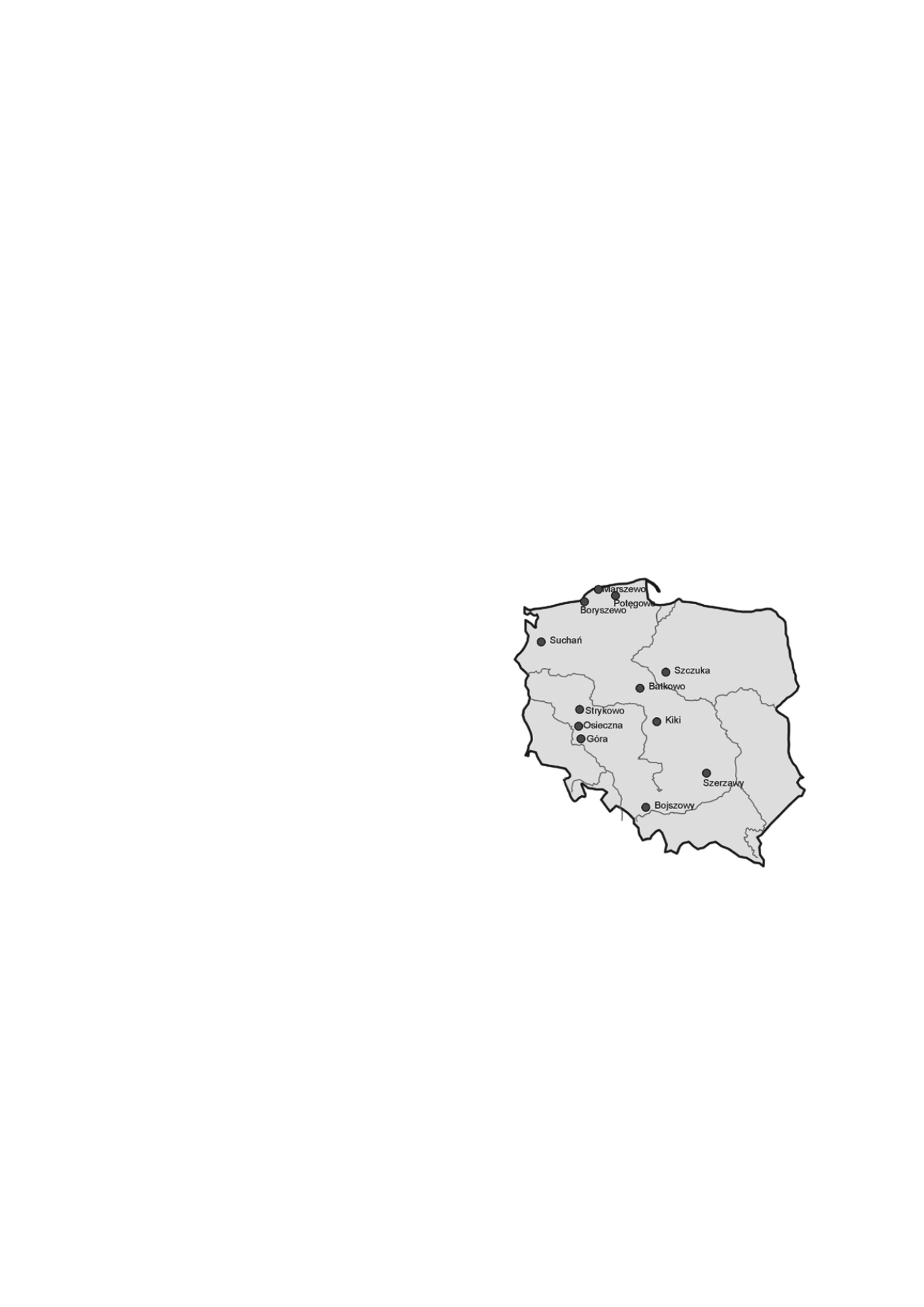
583
Interrelationship between deformation moduli from CPTU and SDMT tests
for overconsolidated soils
La corrélation entre le module de déformation de CPTU et de tests SDMT
pour les sols surconsolidés
Młynarek Z., Gogolik S.
University of Life Sciences, Poznan, Poland
Sanglerat G.
Ingénieur civil des Ponts et Chaussées, Lyon, France
ABSTRACT: At the area of Poland glaciations caused overconsolidation in deep layers of the subsoil. It is imperative to take into
account this fact to calculate the differential settlements of structures subjected to great moments, such as wind turbines. Paper
presents the results obtained from the deformation characteristics estimated from CPTU and SDMT tests in clays Vistula and Riss
glaciations with interbedded layers of fluvioglacial sands.
RÉSUMÉ : En Pologne les glaciers ont provoqué la surconsolidation des couches profondes. Il est impératif de tenir compte de ce fait
pour calculer les tassements différentiels des structures soumises à des moments importants telles que les eoliennes. On présente les
résultats obtenus à partir des caractéristiques de compressibilité évaluées à partir des essais classiques CPTU et SDMT dans des
argiles de Vistula et Riss avec intercalations de couches de sables fluvioglacieres.
KEYWORDS: deformation modulus of overconsolidated soils, CPTU, SDMT
1
INTRODUCTION
Determination of representative values of constrained moduli
and deformation moduli of soils found in the subsoil is a topical
research problem. It is generally known that deformation and
strength parameters may be determined using laboratory and in
situ tests. In the laboratory method the key element in the
evaluation of quality in case of e.g. an oedometric test is
connected with the quality of samples collected for analyses
(Młynarek 2003, Tanaka 2007). This problem is particularly
evident in overconsolidated deposits. This fact indicated that
soil deformation parameters need to be determined in situ using
DMT, CPTU or SDMT method. Static penetration plays a
particularly important role in forecasting values of deformation
modulus of soils, as with the use of this method we may obtain
a continuous picture of changes in moduli in the subsoil in a 1-
D or 3-D system (Młynarek et al. 2007). The other testing
techniques determine values of moduli pointwise. In CPTU the
constrained deformation modulus is determined from
correlation relationships. For this reason calibration or
assessment of quality of the identification of this modulus using
SDMT is of considerable practical importance (Marchetti 1999).
This paper discusses this problem together with an assessment
of interrelationships between modulus G
0
from CPTU and
SDMT tests.
2
INVESTIGATIONS OBJECTS
Subsoil structure in Poland is highly complicated in terms of
their stratigraphy and lithology. The contact zone of the
building structure with the subsoil is comprised primarily of
deposits from the two last glaciations, as well as different forms
of glacilacustrine deposits.
Figure. 1 Location of investigated plots in the region of Poland
The subsoil of the investigated area (Fig. 1) comprises
glacial tills of the Riss and Vistula glaciations, Quaternary and
Pleistocene soils and also Holocene fluvial deposits. The effect
of diversification in terms of the genesis and lithology of soils
in the discussed locations is shown in CPTU classification
systems (Lunne et al. 1997) (Fig.2). In turn, Figure 3 presents
examples of geotechnical profiles and results of CPTU and
DMT. CPTU tests were performed using a Hyson 200 kN static
probe by ap van den Berg, while dilatometer tests were
performed with an original seismic dilatometer by Marchetti
.


